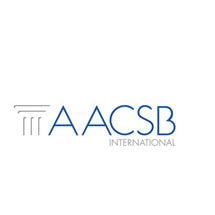Пресс-центр
The Moscow Times, 10.06.2008, Juiced
22 июля 2008
By Stas Shectman
“Your life is full of energy,” says the voice on the television. “But you want even more.” On the screen, a stylishly dressed young man sprints through the streets of an empty city to a pounding techno beat. Fueled by a can of Jaguar energy drink, he races down an alleyway, busting through a brick wall and transforming into a jaguar on the other side.
The commercial is for Jaguar, one of the top-selling energy drinks in Russia and the pride of Happyland corporation, the country’s leading (and the world’s fourth largest) producer of low-alcohol and energy ready-to-drink beverages, or RTDs.
“We’re in the business of selling good mood in a can,” says Elena Gerasimovskaya, Vice President of Marketing for Happyland. “These aren’t staple products like bread or milk. We meet people’s desire to feel good, to relax, to have fun. Our products add celebration to life.”
If Happyland’s corporate philosophy is any reflection, then Russians must be some of the world’s most festive consumers. In the span of about a decade, the country has drank itself into a spot as the second largest market in the world for low-alcohol beverages, according to a 2007 Euromonitor report. The country’s most active consumers live in Moscow and St. Petersburg, where higher incomes better support the pursuit of “active” lifestyles, pleasure and fashion that characterizes the target market — or at least the marketing campaigns — for flavored alcohol beverages. The target demographic is young, mainly male and tends toward the more impressionable end of the 18- to 28-year age range, although studies have shown that many first-time drinkers are as young as 13 years old.
The Ethos of Energy
In April 2007, after more than 18 months of “painstaking” work, Jaguar’s Dutch “alcoenergy” rival Red Devil, of which Happyland is the exclusive Russian distributor, released a sleek new package design distilled from extensive focus-group research. While the formula remained the same, the marketing campaign was brand new.
“Red Devil lets you deal with devilish pressure and get pleasure out of life,” reads the new Russian website, launched in 2007 to celebrate the brand’s makeover. “Thanks to its unique formula (complex vitamins, caffeine and taurine), Red Devil gives you the lasting rush of fresh energy and exceptional sensations that you need for work and play.”
With high-concept multi-media urbanity, the website provides a full range of lifestyle support for its target audience of “young active people who seek positive change.” In addition to product news and information, the site offers downloadable wallpaper and screensavers for computers and mobile phones, recipes for Red Devil-based cocktails, clothing and accessories, a tusovka (party) section with listings for Moscow nightclubs, and a practically silent discussion forum.
“For the youth who buy them, these drinks are messages. They say, ‘look at me, I’m ready for adventure, I’m full of energy, so let’s go!’” says Evgeny Boichenko, director of the MBA marketing program at the Moscow International Higher School of Business, MIRBIS.
But Boichenko is, at the same time, skeptical of these messages. “Society demands that people be energetic and cheerful, active and ready to work, ready to be everywhere at once. People are afraid not to conform to that image and that fear sends them searching for ways to energize themselves.”
If the ethos of the energy drink is about living a life full of excitement — or at least presenting the image of one — then Jaguar’s marketing campaign epitomizes it. Its cans boast “Enough Energy for Two Lives” and its product description touts the drink’s appetite-suppressing, energy-boosting, mood-altering and “life-satiating” properties. In an image-conscious culture and increasingly work-centered society such as contemporary urban Russia, these are attractive promises. For all of its oil and mineral wealth, Russia’s human capital needs fuel, too.
“I used to drink energy drinks in huge quantities when I was in school, when I needed to wake up early and study hard all day,” says Anna Baraulina, a correspondent for the newspaper Vedomosti. “Now I try not to drink them unless I really need to. You wind up getting used to them and up not being able to energize yourself at all without them.”
In Moscow, energy drinks have become an increasingly visible part of the urban landscape, the cans that they come in accessorizing people’s hands and littering the streets. Commuters standing by metro stations, gulping down energy drinks and low-alcohol RTDs, has become a common sight.
Bottling Desire
Of all the major players in Russia’s RTD market, Happyland is perhaps the most promiscuous. In 2003, the company released its Koltsa (Rings) line of bottled cocktails. A firm believer in the power of market research, the company’s president Olga Kurbatova told the newspaper Vedomosti in May, 2003, that the company conducted surveys on the behavior of consumers “around the age of 20” and found that after drinking cocktails, young people often had sex. Hence the logic behind the Koltsa brand — each bottle came with a condom attached. The suggested retail price was 16 rubles.
“But people don’t buy these drinks because they want sex,” argues Boichenko. “For many of the men who buy them, it’s not actual sex, but the appearance of wanting sex and the sensation of being sexual that they desire.”
Sometimes, however, it takes more than sex to sell a drink. Just ask Lebedyanski, the company that makes the Ya, Fruktovy Sad and Tonus juice labels. In the spring of 2004, under a separate company created in order to distance the juice brands from the new alcohol line, Lebedyanski made its own thrust into the ready-to-drink cocktail market with Trax. Its hook was the thinly veiled sexual imagery associated with the name, which “extensive market research confirmed” that Russian consumers read as Cyrillic letters — trakh, slang for “screw.” Although the product won first place for Brand of the Year, something failed to stick. Within weeks of winning the award, the company stopped production of the drink.
Still other companies simply pushed the envelope one step too far. Megapak’s successful line of Hooch cocktails ran with the tagline oHOOCHenniye fruit, but didn’t get too far with it. The ads were subsequently banned by the Russian antimonopoly ministry because of the close association with the vulgar Russian word “akhuyenny,” or “fucking great.”
The Politics of Pleasure
For all of their overwrought marketing, canned cocktails and alcoenergy drinks do their most immediate work on a gut level. For some people it’s the visceral experience of “novelty” and the sensation of “indulgence,” “excitement” and “release” that appeal. Others like that they “kill your hunger.” Still for others, the drinks recall phases of youthful experimentation and (over)indulgence, starter cocktails from which they have since moved on.
“In my student years I drank Greenal’s gin and tonics,” recalls Maria Mikhantieva, 23. “They were kind of like kiddie alcohol — even though they had alcohol, they tasted like soda-pop. That is, until one time after drinking them, I started seriously puking. That lasted all day. I don’t let that crap anywhere near me now, but I often see students in the metro drinking and I can understand the appeal. It’s cheap and like soda, but with alcohol.”
Regardless of what the official age range of the market demographic is, by the time some young consumers join it, chances are they’re not drinking for the first time.
“Of course, teens might try them, just like they might try beer and cigarettes,” admits Gerasimovskaya. “But we don’t support that and we’re not trying to attract them. We would actually be happier if they didn’t use them, as well as cigarettes and beer.”
Given the rates of alcohol-related illness and mortality in Russia, the thought of underage and youth consumption of low-alcohol drinks worries some people. In 2007, Russia’s chief sanitary doctor, Gennady Onishchenko, wrote a report expressing concern over the country’s high rates of alcoholism and alcohol-related mortality. Pointing to the rapid growth and aggressive marketing of the low-alcohol cocktail and beer market, Onishchenko worried about their increased popularity among underage youth who, as studies have shown, have increasingly begun experimenting with alcohol at an earlier age — a shift down from 16-18 year olds to 13-15 year olds.
“In Russia, men and older adults tend to drink hard liquor such as vodka, which leaves youth and women as the main targets for the low-alcohol cocktail market,” says Kirill Danishevski, lead consultant for the Open Health Institute. “The problem with the Russian market is that these drinks have come to supplement hard liquor, rather than replace it. They’re cheap, easy to get and sold practically everywhere.”
In 2005, amidst fears of toxic additives and synthetic colorings, Russia’s State Duma called for a ban on drinks with tonic ingredients. Although the bill failed to pass, its sentiments were echoed a year later, when Onishchenko advised authorities to ban the sale of low-alcohol energy drinks in places where teenagers and young people participate in cultural events. That bill, too, fell flat.
To Gerasimovskaya, health concerns are a two-way street.
“We’re ready to accept the health criticisms if we also admit that drinks like Coke and Pepsi are just as bad,” she said. “If you want to take that approach and prohibit these drinks, then let’s include soft drinks, too. If we’re talking about artificial coloring, then even yogurt could be included, for that matter. Let’s get rid of these double standards and say no to all of these things.”
http://www.moscowtimes.ru/index.htm
все публикации |











